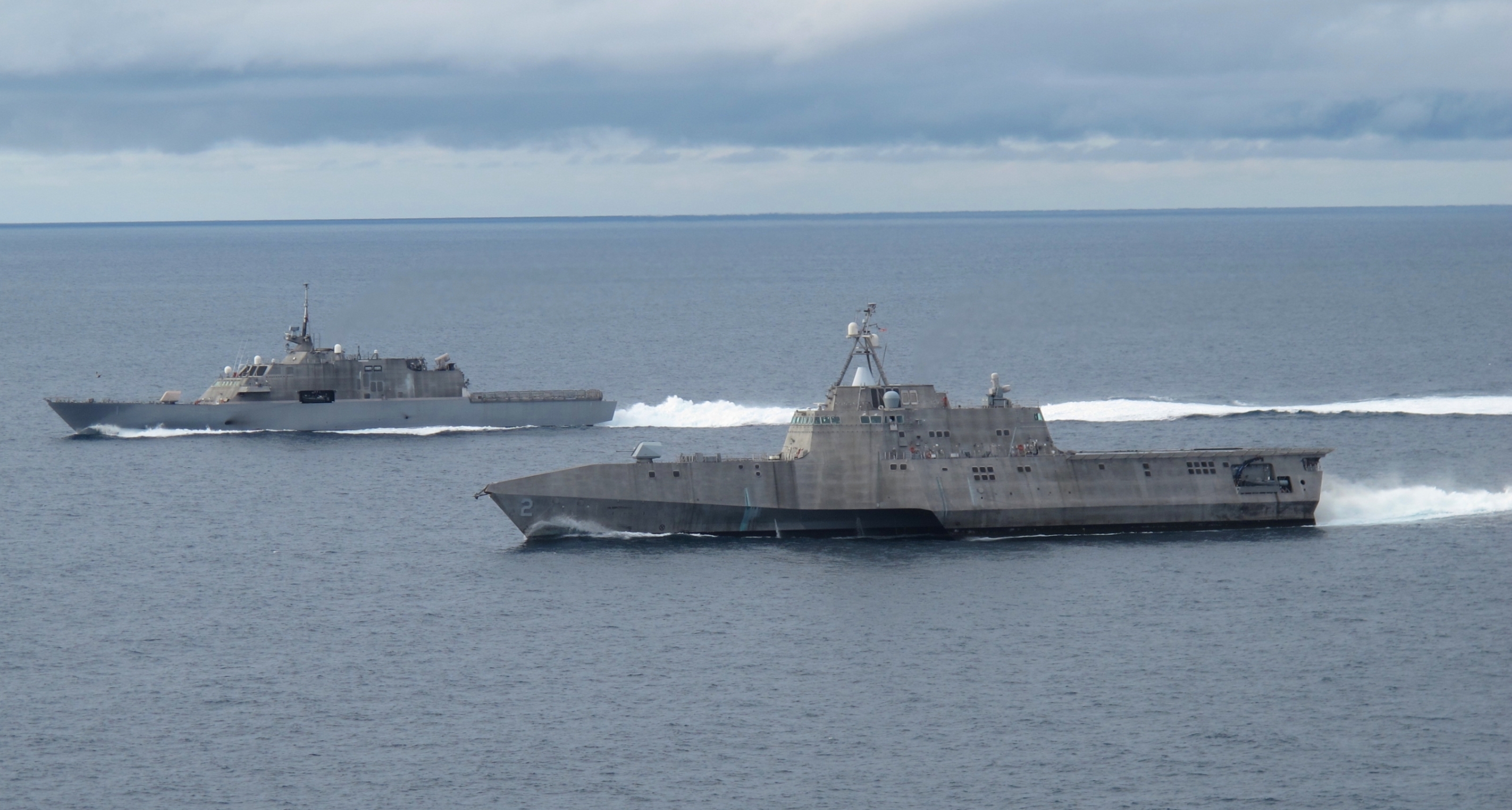
The Pentagon will cut the final number of the Navy’s Littoral Combat Ships (LCS) by 20 — from 52 to 32 — and shortly begin a study on a new frigate for the service, Secretary of Defense Chuck Hagel told reporters at a Fiscal Year 2015 Defense Department budget preview on Monday afternoon.
“I am concerned that the Navy is relying too heavily on the LCS to achieve its long-term goals for ship numbers. Therefore, no new contract negotiations beyond 32 ships will go forward. With this decision, the LCS line will continue beyond our five-year budget plan with no interruptions,” Hagel said in remarks to reporters at the Pentagon.
Hagel has instead directed the Navy to, “submit alternative proposals to procure a capable and lethal small surface combatant, consistent with the capabilities of a frigate.”
The Navy is to consider options that would include, “a completely new design, existing ship designs and a modified LCS. These proposals are due to me later this year in time to inform next year’s budget submission.”
The Navy bought both Lockheed Martin’s Freedom-class and Austal USA’s Independence-class LCS variants in 2010 in an $8.9 billion deal for 20 ships.
The Navy had planned to execute a second block buy of ships as part of the Fiscal Year 2015 budget.
The move from the Pentagon follows a veiled reference from acting deputy secretary of defense Christine Fox that the Pentagon should avoid an over reliance on so-called “niche platforms,” she said earlier this month.
“Presence is important – presence with a purpose, and with capability,” she said.
“But with limited resources and global responsibilities, we simply can’t afford to build a navy tailored for one region and one kind of fight.”
The Navy has pushed back publically on a rumors of reduction in the number of LCS that emerged earlier this year.
“We have a valid requirement for 52 ships, and the program is performing strongly,” Navy acquisition chief Sean Stackley told reporters in January.
“So the Navy’s position on the LCS program is that it is solid.”
The service views much of the LCS missions to be in the so-called Phase 0 operations — establishing ongoing peaceful interactions with international entities — and Phase 1 operations — early shows of force and presence ahead of an armed conflict. LCS operations would free up other ships for higher end operations.
“LCS is not a [guided missile destroyer],” Capt. Randy Garner, Commodore of LCS Squadron (LCSRON) One, told USNI News in an interview on Feb. 20 on the overall program.
“That is relatively obvious. We are not going to shoot satellites out of the sky.”
Garner and Cmdr. Jerry Olin, the U.S. Surface Forces requirements officer for the LCS program, would not speak to what a reduction in the ships would mean for the program and gave their comments based on the Navy’s stated overall vision for LCS.
Olin said “in Phase 1 and Phase 0 operations it’s far more economical to operate a $400 million ship than a $1.75 billion destroyer with a crew of 300 people to conduct many of the lower end missions with what we do in the Navy with about 98 percent of our time.”
Both hulls of the LCS will be manned a crew of about 90 sailors for surface warfare (SuW), anti-submarine warfare (ASW) and mine countermeasure (MCM) operations. Each operation is executed by a series of mission packages that can be swapped out of the ship depending on the circumstances.
The MCM mission is among the most crucial for the ships as the Navy’s current Avenger-class (MCM-1)minesweepers are among the service’s oldest ships and are rapidly reaching the end of their service lives.
The new frigate study will be overseen, in part, by the Pentagon’s Director, Operational Test and Evaluation (DOT&E), a defense official familiar with the modified program, told USNI News.
DOT&E has been highly critical of the LCS program in its annual reports for years calling the ships under gunned and not survivable in certain combat situations.
The new study opens the door for the first new combat surface ship design concept in more than a decade.
Huntington Ingalls Industries (HII) — builder of the Arleigh Burke (DDG-51) guided missile destroyer — has been open about adopting its National Security Cutter design for the Coast Guard as an option if the Navy decided to build a more traditional frigate.
Lockheed and Austal have both shopped beefed up variants of their ships for international customers in recent years.





